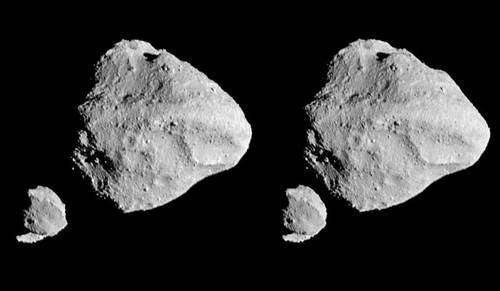
Selam’s Age: New Method Provides Insights into the Formation and Evolution of Binary Asteroids
A recent study has revealed that an asteroid known as “the baby of Lucy” is only between 2 and 3 million years old. This asteroid was discovered in November by a NASA spacecraft and orbits another asteroid called Dinkinesh. Researchers from Cornell University used innovative statistical calculations based on dynamics to estimate the age of the asteroid named Selam. This new method complements traditional methods such as analyzing surface craters and does not require expensive spacecraft for close-up images, making it more versatile.
The findings suggest that binary asteroids like Selam and Dinkinesh are complex objects that engage in a tug-of-war due to gravity and radiation from the Sun. The researchers calculated that Selam formed from surface material ejected by Dinkinesh and reached its current state after around 3 million years. This age estimation method can be applied to other binary systems with well-characterized dynamics, providing valuable information about their formation and evolution.
Moreover, the age of the asteroid Selam is younger than the fossil of the human ancestor it is named after, a 3-year-old girl found in Ethiopia that is 3.3 million years old. This discovery suggests continuous creation of binary asteroid systems and contributes to our understanding of the dynamics of these fascinating objects. The researchers now aim to apply their method to other binary systems and contribute to the field of asteroid research.
NASA’s mission Lucy is set to study Trojan asteroids in Jupiter’s orbit in 2027, further advancing our knowledge of the solar system.
In conclusion, this new study provides valuable insights into the formation and evolution of binary asteroids like Selam and Dinkinesh. It also highlights how innovative methods can complement traditional approaches in estimating their ages accurately without requiring expensive spacecraft for close-up images. As we continue to explore our solar system, studies like this one will undoubtedly help us uncover more secrets about its origins and future possibilities.

:quality(75)/cloudfront-us-east-1.images.arcpublishing.com/elcomercio/S24UEJ6DH5EY7N732JNWUBK2SQ.jpg)